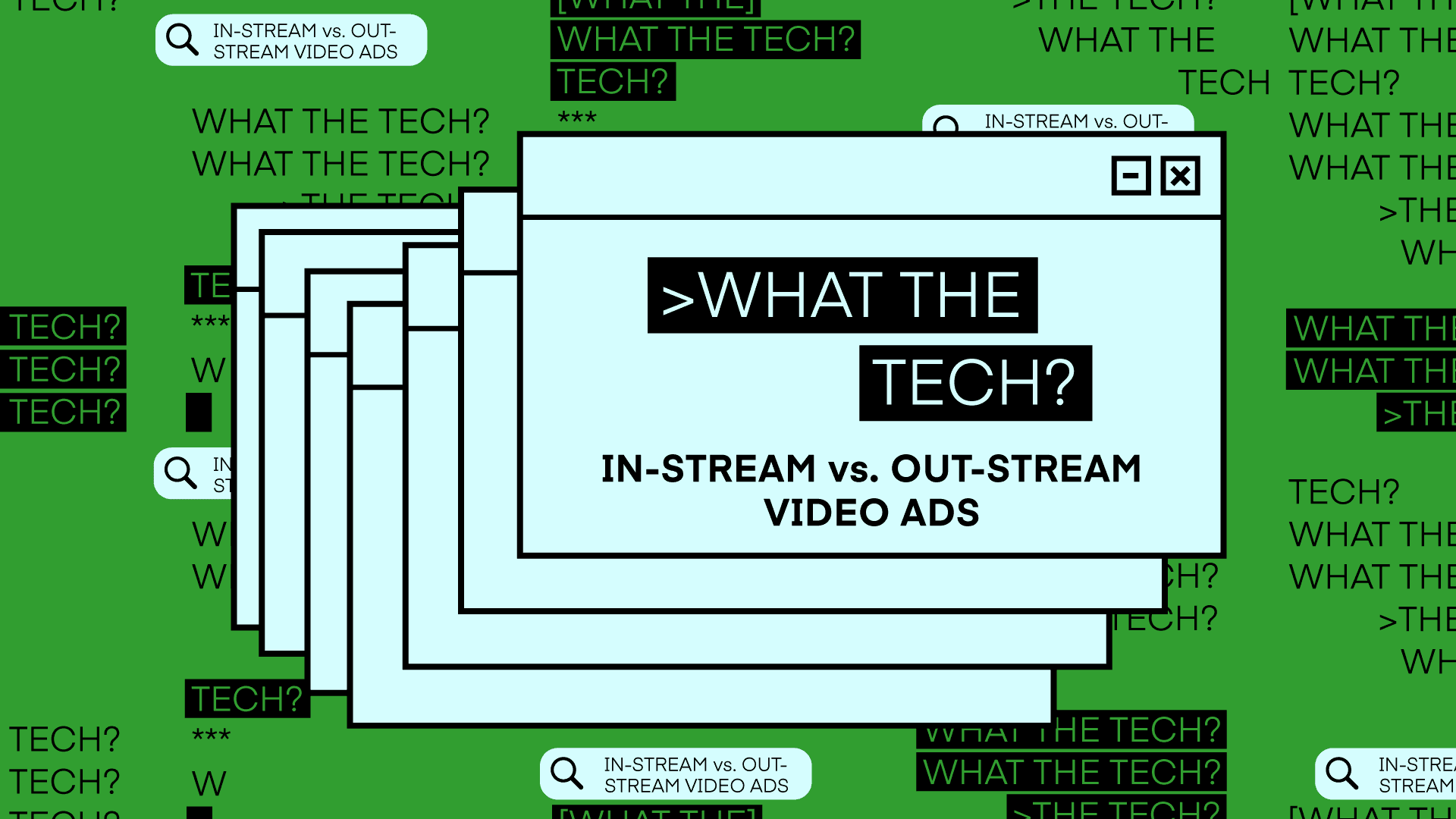What the Tech are in-stream vs. out-stream video ads?

Illustration by Ollie Catton / The Current
Digital video ads fall into one of two categories: in-stream and out-stream.
You’re probably racking your brain as to what the difference between the two could possibly be. After all, isn’t all digital video “streaming”? “In-stream” might seem self-explanatory enough, but “out-stream”…streaming out from where? To where? Rest assured the distinction is even more complicated and technical than that.
In-stream and out-stream video ads are just more examples of the convoluted jargon endemic to the digital media industry, and making sense of these terms is exactly why this column exists. To better understand in-stream versus out-stream video ads, we’ve compiled this handy FAQ addressing all your queries about the topic.
OK, fill me in. What is an in-stream video ad?
As the name implies, an in-stream video ad is an ad that occurs within the video player a user has “requested” to watch, as defined by the Interactive Advertising Bureau (IAB), a trade group that sets guidelines for the digital advertising industry. In-stream ads can play before the video starts (“pre-roll” ads), in the middle of the video (“mid-roll”), or after the video ends (“post-roll”), but all occur within the window of the selected viewing content.
Then out-stream ads occur outside of a video, right?
It’s not exactly that simple. Out-stream ads can also occur at the beginning, middle, or end of a video. This is why the distinction is complicated.
The word “requested” is operative here. In-stream ads occur in videos that users have explicitly made an effort to watch (i.e., videos they requested). They clicked on a link that took them to the video or they hit the play button on a video embedded within a webpage. Either way, the user took an action indicating they wanted to view the video content. By contrast, out-stream video ads are viewed passively — that is, the viewer didn’t take an action indicating they wanted to view the video content.
Oftentimes, publishers will embed an auto-play video in the middle of a webpage, in a web banner, or in the corner of the user’s screen. Any ads served within these videos are out-stream video ads because the video was not requested by the supposed viewer.
Why make a distinction between the two?
So that brands can get their money’s worth when buying video advertising inventory.
Out-stream video ads are generally regarded as interruptive, since they’re an auto-play videos that run the moment a webpage is opened. Users will typically quickly mute or disable these ads. As such, many out-stream video ads can go ignored.
It’s important to clarify the difference because brands may buy a batch of video ads thinking they are delivering their message to a captive video audience, only to have their ads placed in out-stream formats and go largely unseen. The publisher still gets the advertising revenue, but the brand doesn’t get as much value from their ad spend.
Last year, the IAB outlined the clear differences between in-stream and out-stream as part of its mission to bring greater transparency to the industry and stamp out underhanded practices. These standards will hopefully drive publishers to provide more accurate signals and enable ad buyers to avoid publishers that do not make the distinction clear.
Is one better than the other?
In-stream ads are widely viewed as more legitimate and effective than out-stream ads, and are thus more valuable to brands and publishers — to the tune of 15 percent to 20 percent higher costs per mille (CPMs) for in-stream ads, according to one report. (For a primer on CPMs, read here.)
That said, out-stream video still has its place in the industry. Serving an out-stream ad can help brands achieve their reach goals, and, in the right execution, drive positive awareness for a brand. But drawing a line between the two ensures brands know exactly what they’re buying.